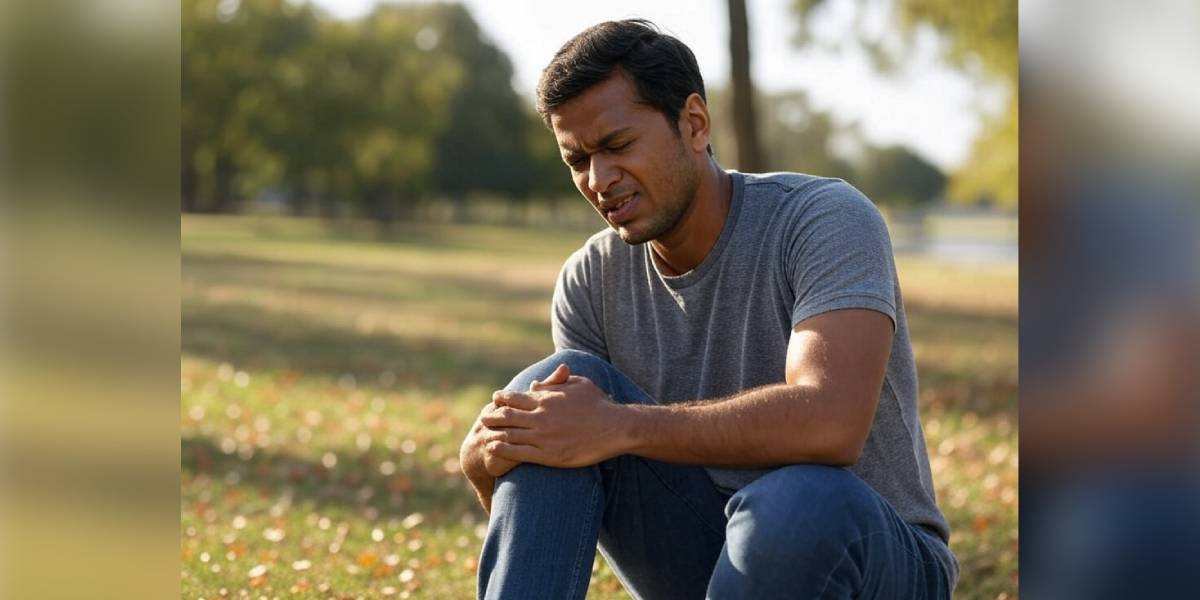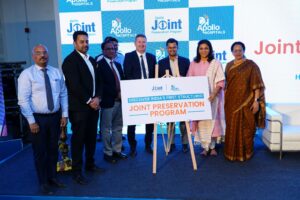Apollo Hospitals has launched the Joint Preservation Program in India, focusing on early intervention and personalised treatment to enhance joint health, maintain mobility, and promote proactive care for long-term well-being
Published Mar 18, 2025 | 7:00 AM ⚊ Updated Mar 18, 2025 | 7:00 AM

Doctors said there are combinations of well-understood psychological and behavioural factors behind joint pain.
Synopsis: Apollo Hospitals has launched the Joint Preservation Program in India, aimed at transforming joint care. The program focuses on early intervention, personalized treatments, and a holistic approach using regenerative medicine, orthobiologic therapy, and minimally invasive surgeries to maintain mobility and reduce major surgery needs. Experts across various disciplines collaborated to develop a comprehensive, scientifically proven plan to treat joint issues effectively
“Very often, when people visit a doctor’s office [with orthopedic issues], they expect a prescription, an injection, or surgery,” said Dr. Sangeeta Reddy, Joint Managing Director of Apollo Hospitals.
She added, “Can we stop joint replacement surgery? No, we’re not planning to. But can we delay it? That’s the important thing.”
Dr. Reddy pointed out that many people endure years of pain before opting for joint replacement, often unaware of the various treatment steps available.
To address this, Apollo Hospitals has launched the Joint Preservation Program in India, an initiative set to revolutionise joint care across its network.
“Our orthopedic surgeons, physiotherapists, pain consultants, internal medicine experts, and rheumatology specialists have been working on a comprehensive plan. Today, we are bringing together every scientifically proven and validated method to treat joint issues as early and as effectively as possible,” Dr. Reddy said at the program’s launch.
The Joint Preservation Program emphasises early intervention and personalised treatment, helping individuals maintain mobility and confidence while fostering a proactive approach to joint health.
Imagine your favourite bicycle. Over time, if you keep riding it without proper care, the tires wear out, the chain gets rusty, and the brakes stop working well. Now, you have two choices—throw it away and buy a new one, or fix it by oiling the chain, replacing worn-out parts, and keeping it in good shape so it lasts longer.
That’s exactly what the Joint Preservation Program does for your joints. Instead of waiting for them to get completely damaged and replacing them (like buying a new bike), doctors use special treatments to strengthen, repair, and keep them working smoothly for as long as possible.
According to Apollo Hospitals, this program is where mobility meets longevity. Unlike conventional treatments that only manage symptoms, their approach is holistic—utilising regenerative medicine to promote natural healing, orthobiologic therapy for advanced joint repair, and minimally invasive surgical techniques to restore mobility and reduce the need for major surgery.
According to Apollo Hospitals, 1 in 5 Indians now suffer from joint issues, with over 180 million affected by arthritis alone. And it’s not just the elderly—40 percent of Indians under 40 report joint pain, with cases rising 15 percent annually among those in their 20s and 30s. Among young athletes, 60 percent experience knee pain due to high-impact sports and intense training with little recovery.
Meanwhile, 67 percent of corporate professionals struggle with joint stiffness, trapped in a cycle of long working hours and poor posture.
Dr. Reddy said that there are concerns over indiscriminate treatments, with patients receiving multiple injections yet finding no long-term relief. “What we’re talking about is validated science—using the right diagnostics at the right time to prevent joint deterioration rather than just treating symptoms,” she explained.
“We have been running programs similar to this for over 10 years at our center, continuously refining and innovating along the way. One of the most important lessons we’ve learned is that this is about more than just treatment—it’s about building a long-term relationship with the patient and shifting the mindset around knee degeneration,” Dr. Brett Fritsch, Orthopaedic Surgeon, Arthroscopic and Replacement Specialist – Knee, Royal Prince Alfred Hospital, Sydney, said during the launch of the program.

Apollo Hospitals team at the launch pf Joint Preservation Program. (Supplied)
He said that Joint degeneration is a lifelong process; it’s a chronic care program, not a curative one. We cannot stop ageing. What we can do is alleviate symptoms, slow down the progression of degeneration, and maximise a patient’s quality of life with the joint they have.
“Naturally, every patient hopes for a single intervention that will cure the problem permanently, so they never have to think about it again. I wish I could say we can do that—but we can’t. No one can,” he said.
He pointed out that they can certainly treat trauma and acute conditions in a way that allows patients to return to normal function, but they are still aging. Managing joint health requires a shift in perspective—it’s not about curing, but about long-term management.
“The right age for joint preservation treatment is not strictly defined, but ideally, it should be before the age of 50,” said chief Joint Replacement & Arthroscopic Surgeon, Apollo Hospitals Dr. K J Reddy.
He said that more importantly, the condition of the joint matters. The lesions—damage or abnormalities in the joint tissues— should not have progressed into osteoarthritis—the joint should still be structurally intact. “We can prolong the onset of osteoarthritis by repairing lesions early, but treatment is most effective when there is no significant osteoarthritic damage in the knee or hip,” Dr KJ Reddy said.
On when to go for Joint Preservation Program, Dr KJ Reddy giving the example of Avascular Necrosis (AVN)— a condition where bone tissue dies due to a lack of blood supply– said, that a key concern today is AVN, whose incidence has increased significantly, especially post-COVID 19.
“Before COVID-19, we would diagnose around two to three cases of AVN of the hip per week. Now, we see about 10 cases weekly. This could be linked to excessive steroid use during COVID-19 treatment or the virus itself affecting blood circulation in the hip joint,” said Dr KJ Reddy.
So, the earliest sign of AVN-related hip issues is groin pain, particularly when:
“If someone experiences these symptoms, they should get an MRI scan promptly. If left untreated, the condition can worsen, making treatment more complex,” said Dr KJ Reddy. And, that is where the Joint Preservation starts.
Dr. Ravi Teja Rudraraju, Consultant – Arthroscopy and Sports Medicine, Apollo Hospitals explained the Science Behind Joint Preservation.
A joint is made up of cartilage, meniscus, ligaments, and proper alignment, all of which must function together to maintain joint health. Addressing issues in any of these areas at the right time can help preserve mobility and prevent deterioration.
Emerging technologies are also set to revolutionise joint preservation therapy:
“Early intervention, personalised treatment, and a proactive approach—whether through exercise, orthobiologics, or minimally invasive procedures—can help patients preserve their joints and lead healthier, longer lives,” said Dr Ravi Teja.
“This program is not about offering experimental therapies—every treatment is scientifically proven and approved by major regulatory and scientific bodies. Our goal is to streamline these treatments and make them more accessible to society, while also ensuring ongoing research enhances our approach,” said the hospital.
(Edited by Ananya Rao)
